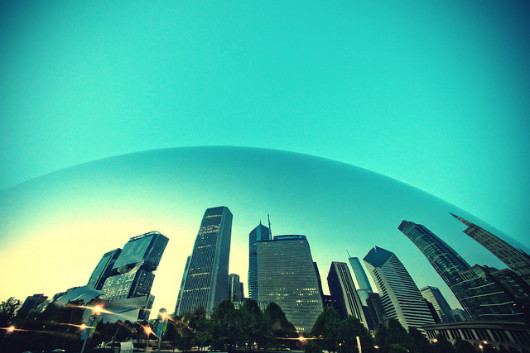Chicago: Religion and the State of Our City
February 2018 will mark the twentieth anniversary of the founding of the Martin Marty Center for the Public Understanding of Religion at the University of Chicago Divinity School.
 Editor’s Introduction
Editor’s Introduction
February 2018 will mark the twentieth anniversary of the founding of the Martin Marty Center for the Public Understanding of Religion at the University of Chicago Divinity School. Over the past two decades Sightings—with its sister publication, the Religion and Culture Forum—has featured contributions from hundreds of authors commenting on a diverse range of topics and trends at the intersection of religion and public life. In the lead-up to this milestone, we have been looking back through our archives to bring you some (but only some!) of what Matthew Arnold would call “the best which has been thought and said” in these digital “pages.”
Today’s issue of “Sightings Classic” gathers together five columns in which Sightings has fixed its sights on our home base, the city of Chicago. Jeremy Biles, a former editor of Sightings, analyzes Chicago’s famous “Cloud Gate” sculpture (a.k.a. “The Bean”) with reference to the work of Mircea Eliade, one of the most important and influential scholars of religion of the twentieth century, who taught at the Divinity School from 1956 until his death in 1986. Cynthia G. Lindner, Director of Ministry Studies and Clinical Faculty for Preaching and Pastoral Care in the Divinity School, looks at the concept of “sanctuary” in light of the immigration crackdown following the September 11th, 2001, attacks, focusing on the case of a woman working at Chicago’s O’Hare International Airport. Martin E. Marty reflects on the final book by Father Andrew Greeley, entitled Chicago Catholics and the Struggles within Their Church. Attorney and writer Jeanne Bishop asks us to do more to address the problems of neglect, abandonment, abuse, scarcity, and want that affect so many of this city’s children. And Julian “J.Kwest” DeShazier, pastor of University Church in Hyde Park and Emmy Award-winning rapper, writes on the religious significance of hip-hop music for himself and others who have grown up on the South Side.
We hope you enjoy these little glimpses into our collective past—and perhaps learn something new about the rich, variegated array of religious expressions in and around our city.
Image: Buildings reflected in Chicago's “Cloud Gate” | Photo Credit: Thomas Hawk/Flickr (cc)
|
Reflections on Chicago’s “Cloud Gate” |
|
Sanctuary or Spectacle? |
|
Andrew Greeley’s Chicago Catholics |
|
Thanksgiving 2013: So Far From Want |
|
|
Sightings is edited by Brett Colasacco (AB’07, MDiv’10), a PhD candidate in Religion, Literature, and Visual Culture at the University of Chicago Divinity School. Sign up here to receive Sightings via email.


